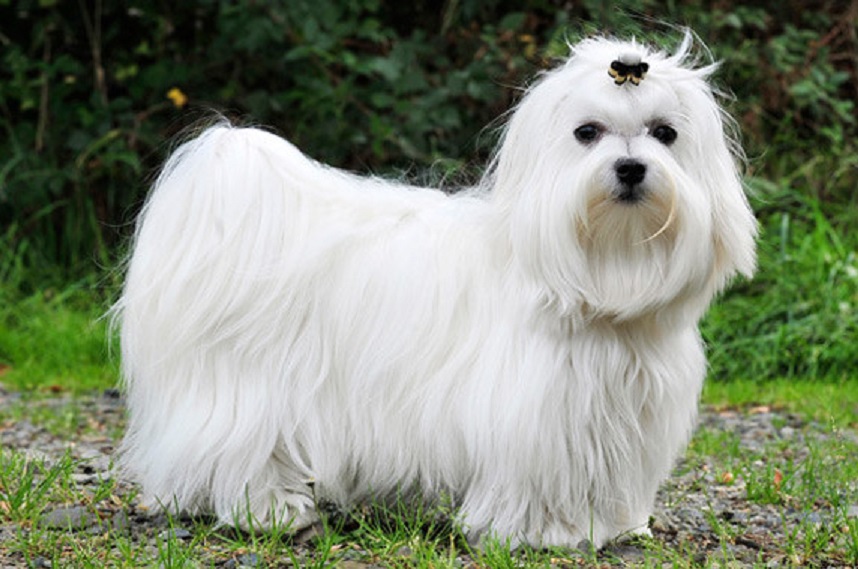
Maltese

Navigate through the tabs
Navigate through the tabs below to view the breed's info of your interest.
The breed's info is divided in four sections; namely:
the breed's history ,
the breed's main stats ,
the dog's potential health issues
and finally, how the breed scored in 26 different categories.
All the above information should give you a respectively good overview for the dog of your interest.
Dog Breed's Main Info
The Breed's History:
The Maltese dog is one of the most ancient of the toy breeds, with a history that can be traced back at least two millennia. Artists, poets, and writers immortalized this small dog in the early great cultures of Greece, Rome, and Egypt. They even were mentioned by Aristotle. The Greeks erected tombs for their Maltese dogs, while representations of Maltese-like dogs on Egyptian artifacts suggest that they were prized by that ancient culture.
The Egyptians and, centuries later, many Europeans, thought that the Maltese had the ability to cure people of disease and would place one on the pillow of an ill person. This inspired one of its names - "The Comforter". Even before the Christian Era, the breed was widespread in Mediterranean cultures.
Despite his prominence in history, the exact origin of the Maltese dog is uncertain. Many believe the breed was developed in the Isle of Malta in the Mediterranean Sea from Spitz- or Spaniel-type dogs. Others believe he was developed in Italy, and still others believe that he was originally from Asia and had a part in developing many of the smaller Asian dogs.
Wherever he came from, the Maltese thrived. By the 15th century, he had found a secure place in the arms and hearts of French aristocrats. During the reign of Henry VIII, Maltese arrived in the British Isles. By the end of the 16th century, the Maltese had become a favorite pet for noble and royal ladies. The little dog was a favorite of Queen Elizabeth I, Mary Queen of Scots, and Queen Victoria. Numerous painters, including Goya and Sir Joshua Reynolds, included these small dogs in their portraits of beautiful women.
Although he survived the fall of the Roman Empire and the Dark Ages, the Maltese was nearly destroyed in the 17th and 18th centuries when attempts were made to breed him to be the size of a squirrel. After this nearly disastrous experiment, breeders mixed poodles, miniature spaniels, and East Asian miniature dogs with the breed to save it. This resulted in the Maltese becoming so varied that several new breeds were formed. It is thought by many that Maltese are the direct ancestors of the Bichon Frise, Bolognese and Havanese breeds.
English breeders developed the Maltese as we know him now. Many of the Maltese in the U.S. today trace their heritage back to English imports. Maltese were first seen in the U.S. in the late 1800s. They were entered in the earliest Westminster Kennel Club shows in the 1870s.
The number of Maltese dogs registered with the AKC grew very slowly until the 1950s. Since then, the breed has become quite popular. Maltese are one of the most popular breeds among spectators at dog shows, and frequently win the Toy Group. They also have an excellent record in the "Best in Show" competition.
Country of Origin:
Mediterranean Basin
Breed Group:
Companion
Height:
8 inches 10 inches (20,32 to 25,4 cm)
Weight:
Up to 7 pounds (3,18 Kg)
Life Span:
12 to 15 years
Potential Health Issues:
Portosystemic Liver Shunt,
Patellar Luxation,
Hypoglycemia,
Progressive Retinal Atrophy (PRA),
White Dog Shaker Syndrome,
Collapsed Trachea,
Reverse Sneezing
Adaptability
Apartment Living:
First Time Owners:
Sensitivity:
Being Alone:
Cold Weather:
Hot Weather:
Friendliness
Affection With Family:
With Kids:
With Dogs:
With Strangers:
Health and Grooming
Shedding:
Drooling:
Easy To Groom:
Overall Health:
Weight Gain Potential:
Size:
Training
Easiness:
Intelligence:
Mouthiness:
Prey Drive:
Barking or Howling:
Wanderlust:
Need For Exercise
Energy Level:
Intensity:
Exercise Needs:
Playfulness:
Our Mobile Application
Check out Our Mobile Application "Dog Breeds Central"
